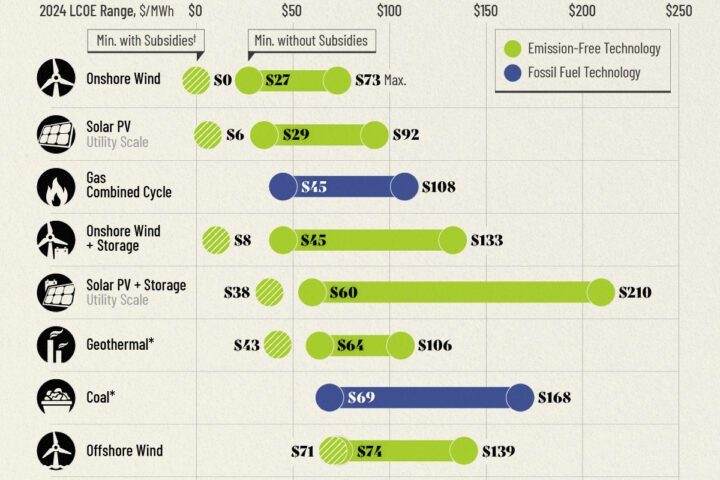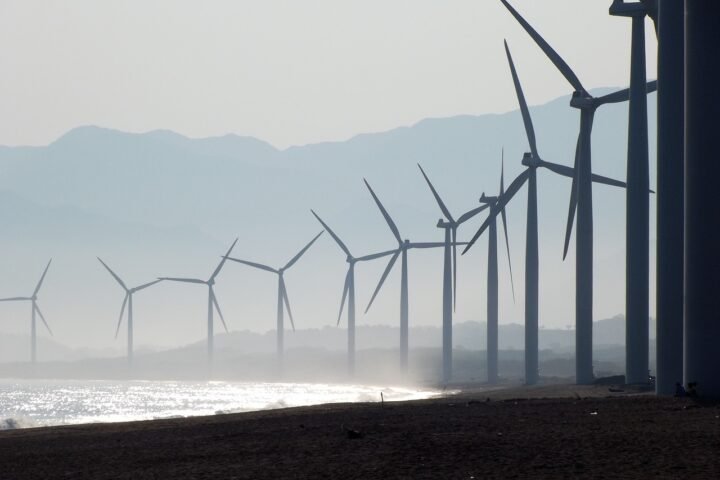From WRI
Some highlights from the article:
Clean energy continues to be the dominant form of new electricity generation in the U.S., with solar reaching record levels in 2023.
A record 31 gigawatts (GW) of solar energy capacity was installed in the U.S. in 2023, a roughly 55% increase from 2022 installations and substantially more than the previous record in 2021. Even with significant project delays due to supply chain issues and other factors, solar was the fastest-growing power source in the U.S, representing half of all new utility-scale generating capacity through Q3 of 2023. Installed solar capacity in the U.S. now totals 161 GW, enough to provide about 5% of the nation’s electricity, according to the Solar Energy Industries Association.
Battery storage also grew substantially in 2023, with installations through Q3 exceeding those of all of 2022. Strong growth is expected to continue, with a projected doubling of capacity in 2024.
…
States continue to pass ambitious climate and clean energy policies.
Minnesota adopted a 100% clean electricity standard at the beginning of 2023. Michigan followed suit at the end of the year and joined states such as California and New York in passing ambitious permitting reforms intended to make it easier to build clean energy and transmission. Seven states adopted California’s tailpipe-emissions standards, which require automakers to increase the share of zero-emission vehicles sold over time. New York adopted a ban on fossil fuel use in most new buildings, beginning in 2026, while Washington set limits on gas appliances in new construction. State actions are critical to ensuring a successful clean energy transition, as federal actions alone are insufficient.

…
Supply chain challenges persist in the U.S. and globally, delaying renewables projects and slowing growth rates.
Many projects slated to come online early in 2023 were pushed back in part because of supply chain challenges. Shortages of transformers needed for connecting clean energy to the grid remain a particular obstacle. The delivery time for transformers and other associated equipment has grown from 50 weeks to 150 weeks, as of the end of 2023, according to one developer. Wood Mackenzie estimated that only about 20% of U.S. transformer demand can be met by domestic supply — and that lead times for large transformers, substation power and generator step-up transformers now range from 80 to 210 weeks.
However, solar supply chain challenges eased and global solar module prices fell over the course of 2023, enabling many delayed projects to be completed. But starting in June 2024, President Biden’s two-year pause on solar tariffs will expire; solar modules subject to the duties will become more expensive. Earlier, the Commerce Department determined that solar modules using Chinese-sourced materials imported from four Southeast Asian countries (Vietnam, Malaysia, Thailand and Cambodia), which have been the source of three-quarters of U.S. module imports, will be subject to trade duties.
…
The buildout of the transmission system is not happening at the pace needed—and interregional transmission is particularly lagging.
Lack of transmission is a critical limiting factor for the clean energy transition and poses a threat to reliability in some areas, particularly in the face of increasingly common extreme weather events. Interregional transmission lines that cross state borders continue to face hurdles in gaining approvals from multiple states and determining how to allocate costs among beneficiaries. Lack of sufficient planning processes and methods to assess interregional benefits are the main challenges. Together, the 36 major transmission projects that could begin construction in the near-term represent only about 10% of the transmission investment needed in the U.S. And new lines can take 10 years to build, although technologies to increase the capacity of existing lines can be implemented more quickly. Several analyses (see here, here and here) suggest that transmission capacity needs to double or triple to meet grid needs and achieve President Biden’s 2035 clean energy goals, and interregional transfer capacity needs to quadruple.
[...]




